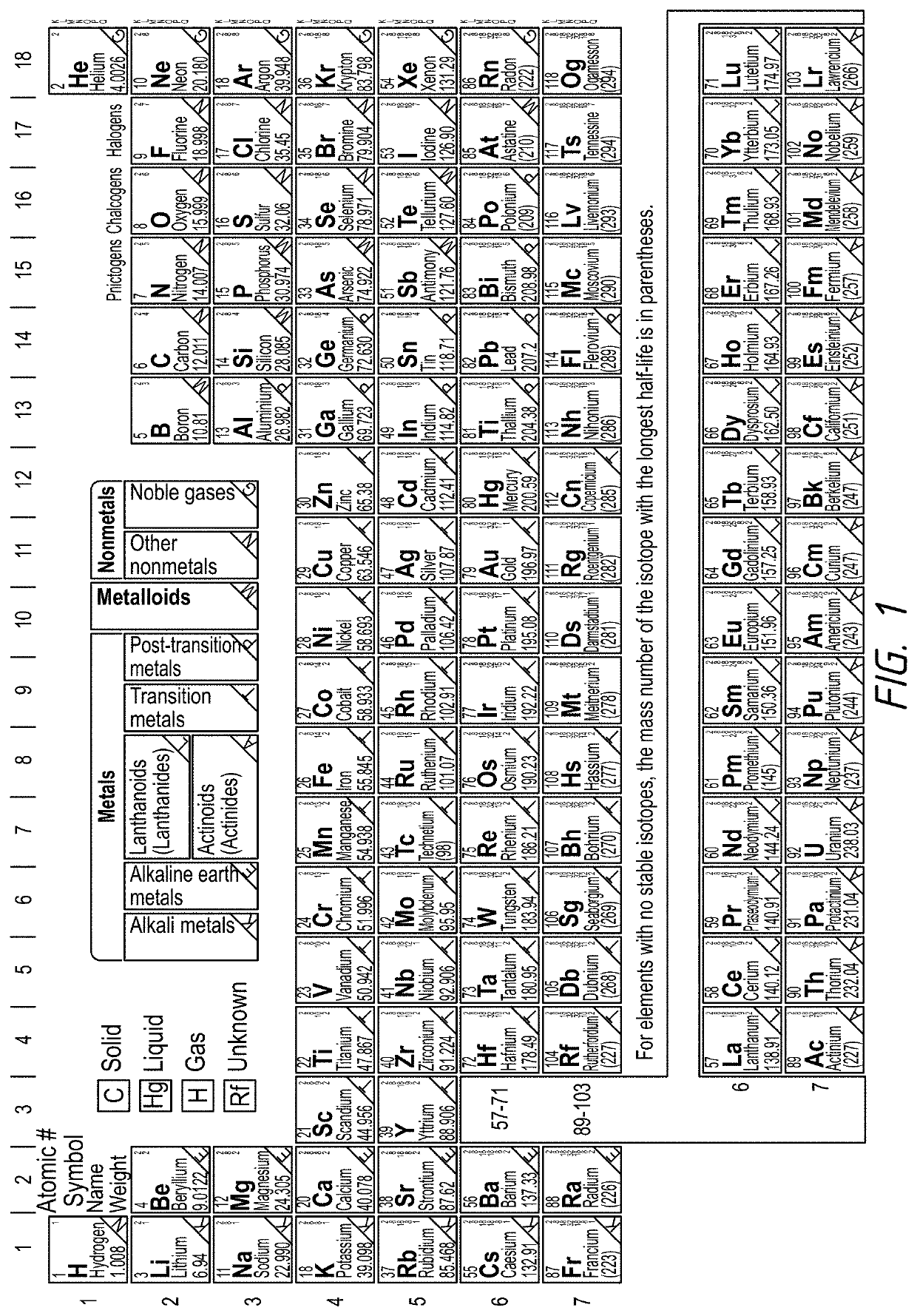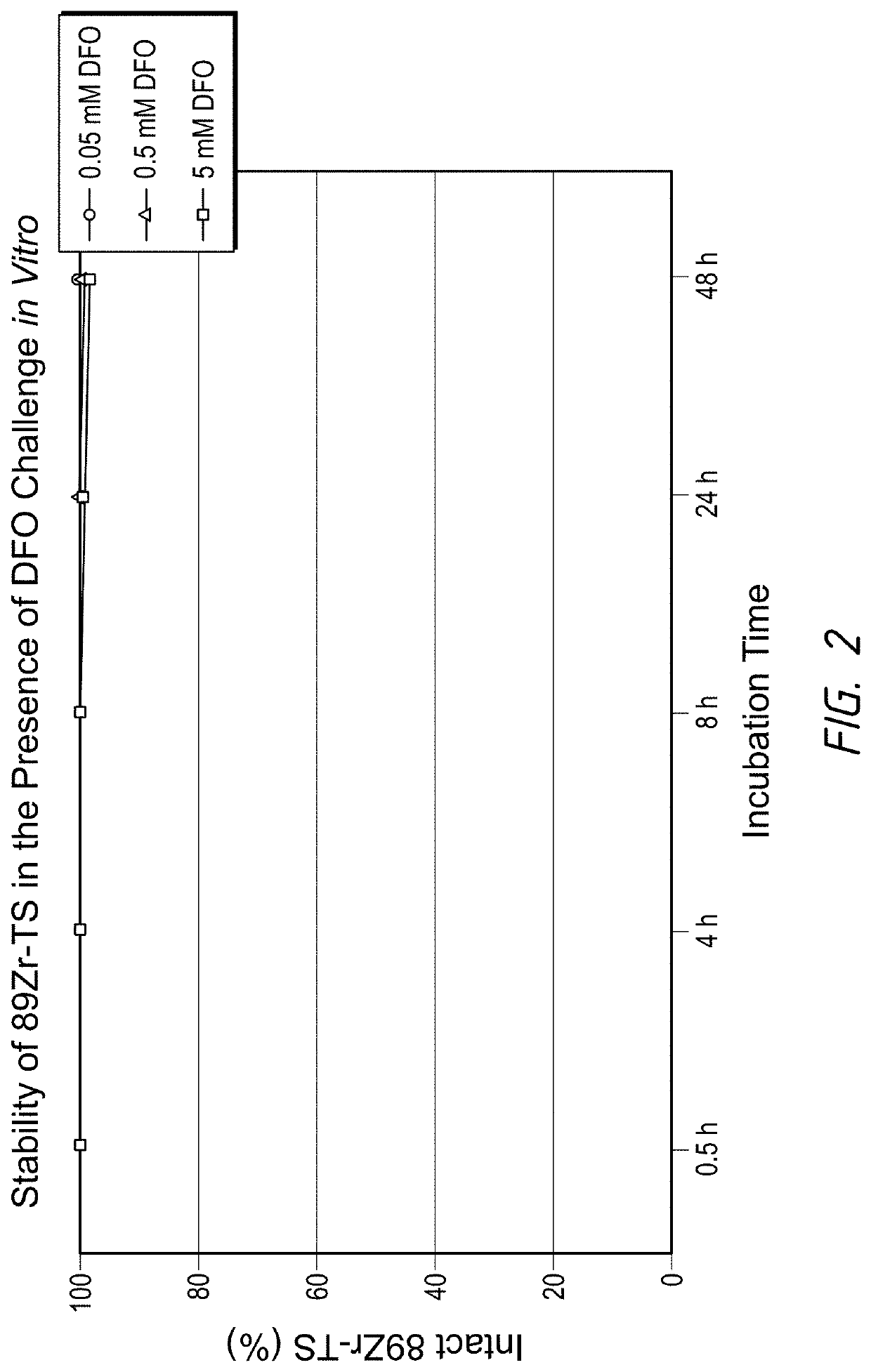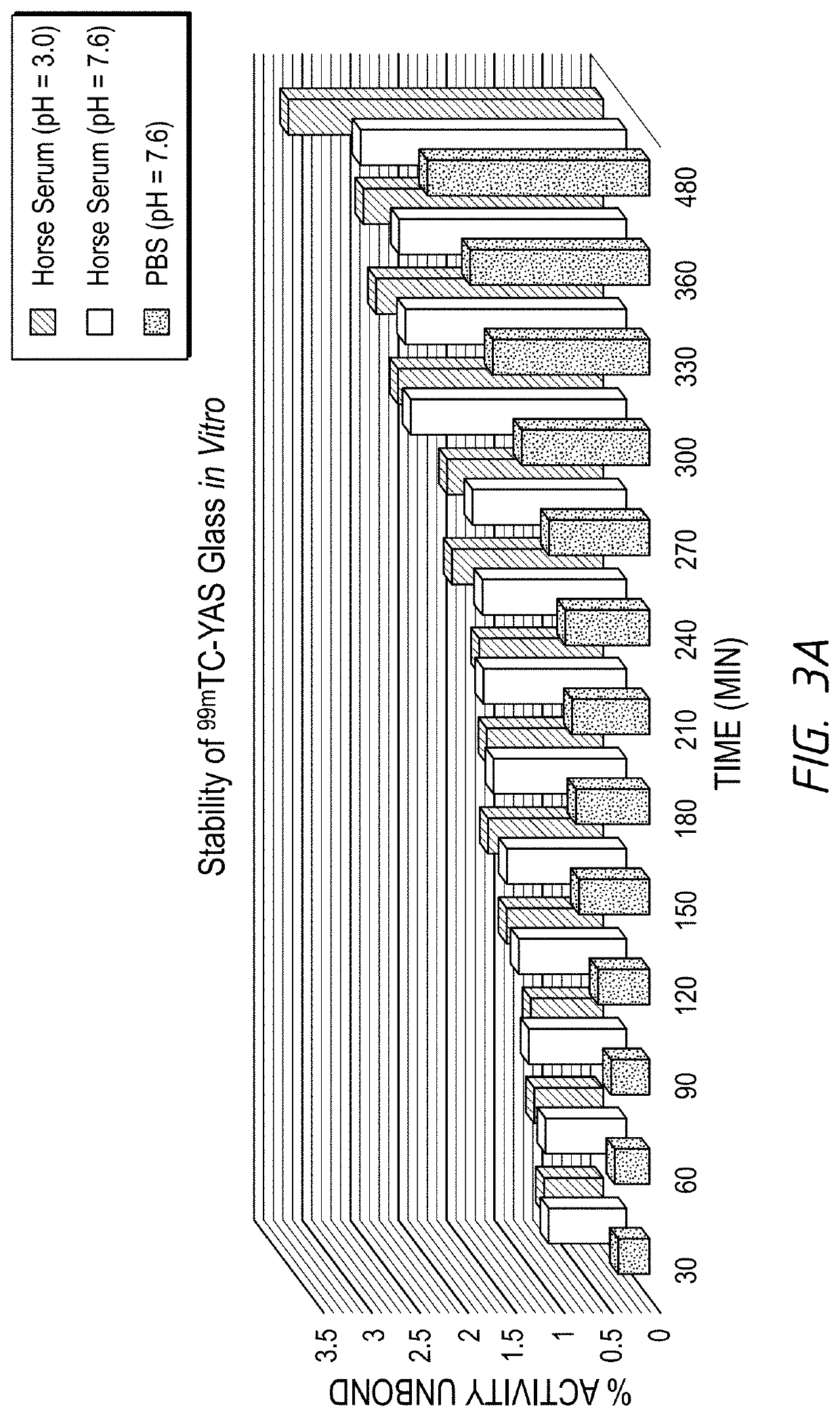Particles functionalized with imageable radioisotopes and methods of making and use thereof
- Summary
- Abstract
- Description
- Claims
- Application Information
AI Technical Summary
Benefits of technology
Problems solved by technology
Method used
Image
Examples
example 1
Preparation of Zirconium-89 Coupled Yttrium Aluminum Silicon Oxide (YAS) Microspheres
[0691]A 4 mL glass vial was charged with yttrium aluminum silicon oxide (YAS) glass beads (TheraSphere®, Biocompatibles UK Ltd, provided as non-radioactive spheres which had not been exposed to neutron bombardment. Y2O3 was therefore in the form of naturally occurring 89Y) and suspended in 300 μL of deionized water. Next, a 2 μL aliquot of Zirconium-89 in 1 M oxalic acid (3D imaging, Little Rock, Ark.)) (about 100 microcuries (μCi)) was added to the reactor vial, followed by 2 μL of 2 M sodium carbonate, followed by a Teflon®-coated magnetic stir bar. The reaction mixture was stirred and heated for 2 hours on a 120° C. aluminum heating block, then removed from the block and allowed to cool to room temperature. The microspheres were suspended in 3.0 mL of deionized water and passed through a 0.22 μm syringe filter to collect the microspheres for labeling analysis. The glass vial was rinsed with an ad...
example 2
Preparation of 99mTc Coupled Yttrium Aluminum Silicon Oxide Microspheres
[0692]Tin(II) chloride dihydrate (1 mg) was added to a 1 dram vial and dissolved in 400 μL of deionized water. In a separate 1 dram vial, yttrium aluminum silicon oxide glass beads (89Y, non-radioactive TheraSphere—TS) were added, followed by 100 μL of [99mTc]sodium pertechnetate (>30 mCi / mL). The tin(II) chloride dihydrate solution was added to the TheraSphere vial, briefly mixed (approximately 3 seconds) and the vial was capped and allowed to react at room temperature for 60 minutes. The microspheres were suspended in 3.0 mL of deionized water and passed through a 0.22 μm syringe filter to collect the microspheres for labeling analysis. The glass vial was rinsed with an additional 4 mL of deionized water, which was then passed through the syringe filter. The syringe filter (containing the labeled microspheres), the glass vial, and the deionized water filtrate were analyzed by a gamma well counter and the resul...
example 3
[89Zr] Microsphere Ligand Challenge with DFO Chelate
[0693]YAS microspheres (e.g., Therasphere) (suspended in 200 μL sterile saline, pH 7-8) were mixed with increasing concentrations of desferrioxamine (DFO), ranging from 0.05 to 5 mM, and incubated at 37° C. under constant stirring. At each time point, 5 μL of solution was removed, added to a 0.45 μm spin filter, and diluted with 100μL of deionized water. The spin filter was centrifuged at 13,200× G for 60 seconds, 100 μL of deionized water was added back to the spin filter and centrifugation repeated. The spin filter was removed from the microcentrifuge tube and the supernatant was analyzed by gamma spectroscopy, then counted in a gamma counter, to detect formation of possible 89Zr-DFO. Negligible 89Zr detachment was detected for 89Zr-TS within 48 h, demonstrating a strong binding affinity of 89Zr to TS. Results are shown in FIG. 2.
PUM
 Login to View More
Login to View More Abstract
Description
Claims
Application Information
 Login to View More
Login to View More - R&D
- Intellectual Property
- Life Sciences
- Materials
- Tech Scout
- Unparalleled Data Quality
- Higher Quality Content
- 60% Fewer Hallucinations
Browse by: Latest US Patents, China's latest patents, Technical Efficacy Thesaurus, Application Domain, Technology Topic, Popular Technical Reports.
© 2025 PatSnap. All rights reserved.Legal|Privacy policy|Modern Slavery Act Transparency Statement|Sitemap|About US| Contact US: help@patsnap.com



